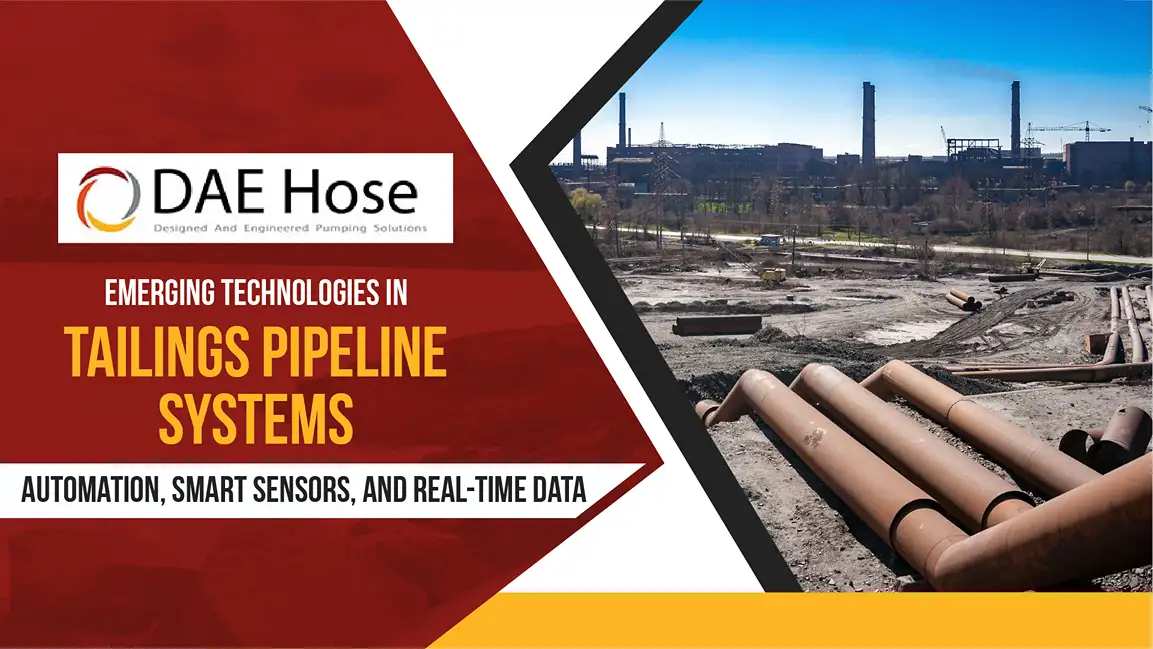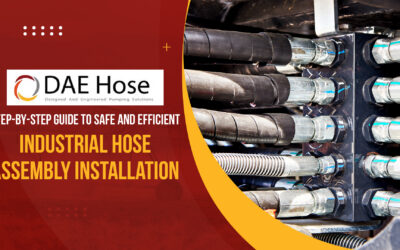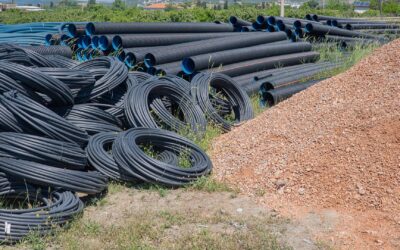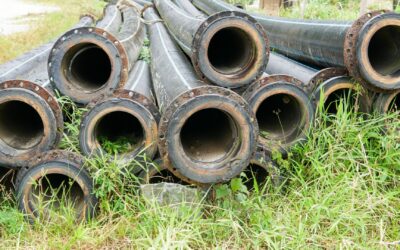Tailings transport systems are vital infrastructure in industries like mining, where they carry waste byproducts, known as tailings, from mineral processing plants to disposal sites. Due to the environmental impact and operational challenges in managing these systems, there is an increasing demand for advanced technologies to improve efficiency, safety, and mitigate risks. Innovations such as automation, smart sensors, real-time data monitoring, and advanced materials are transforming the landscape of tailings pipeline design.
This article explores the transformative effect of these technologies, highlighting how automation enhances operational management, the role of smart sensors in real-time monitoring, the growing importance of real-time data for decision-making, and the advantages of advanced materials like HDPE tailings pipes in pipeline systems. Emphasizing safety, cost efficiency, and sustainability, the article offers an in-depth analysis of the evolving design, monitoring, and maintenance of tailings pipelines.
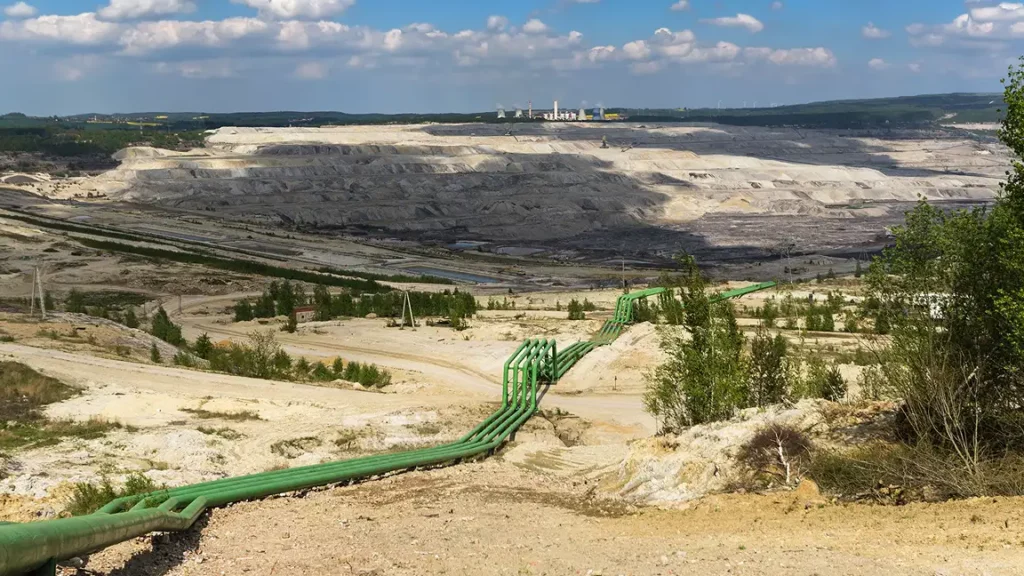
The Role of Tailings Pipelines in Industrial Operations
Tailings pipelines are designed to transport waste byproducts from the mineral extraction process, often in slurry form. These byproducts are typically disposed of in tailings dams, ponds, or other containment systems. Essentially, these pipelines help manage waste and minimize the environmental footprint of mining and similar industries.
In mining operations, tailings contain various materials, including water, minerals, chemicals, and sometimes toxic compounds. Pipelines play a crucial role in preventing environmental contamination and managing waste efficiently, safely, and controlled. However, managing these systems presents unique challenges, such as durability concerns, wear and tear, environmental impacts, and maintenance requirements.
The adoption of advanced materials like HDPE tailings pipes has significantly improved the efficiency and longevity of these systems. Furthermore, the evolution of tailings pipeline design has addressed these challenges by focusing on enhancing durability, minimizing failures, and reducing environmental risks. Through continuous innovation, modern tailings pipeline design strives to create systems that are more reliable, environmentally responsible, and cost-effective.
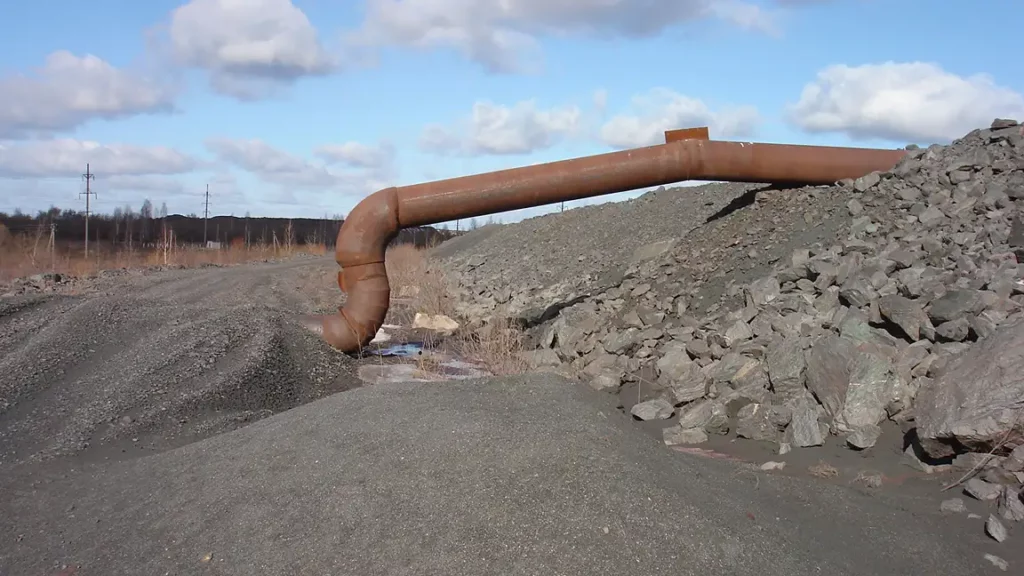
Challenges in Traditional Tailings Pipeline Design
Historically, these transport systems have faced several operational challenges, leading to downtime, increased maintenance costs, and environmental hazards. Issues such as the abrasive nature of tailings materials, fluctuating flow rates, varying pressure levels, and the risk of blockages, leaks, or ruptures have been prevalent. Traditional systems have relied heavily on manual monitoring, which often leads to inefficiencies in detecting problems and responding to malfunctions. This reactive approach has resulted in costly failures, environmental contamination, and extended operational downtime.
For example, when pipeline pressures fluctuate or slurry accumulates due to blockages, the system becomes susceptible to ruptures, which can cause significant environmental harm. Operators often respond only after these problems have worsened, underscoring the need for advanced technologies offering continuous monitoring and proactive maintenance.
The adoption of HDPE tailings pipes has mitigated some of these challenges by enhancing durability and wear resistance, but the design of these transport systems continues to evolve. Modern tailings pipeline design now incorporates smarter, more efficient monitoring and maintenance practices, ensuring that potential issues are detected early and addressed before failures occur.
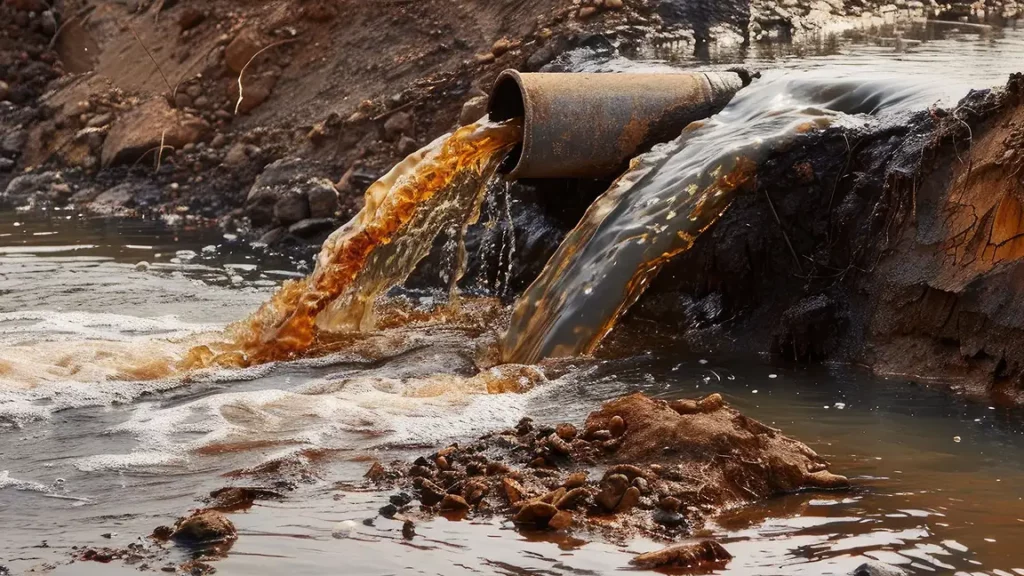
The Need for Innovation in Tailings Pipeline Design
Transport systems play a crucial role in minimizing the environmental impact of mining operations, prompting a demand for innovation in tailings pipeline design. This is essential for addressing issues like pipeline failure, inefficiency, and environmental risks. Modern systems now incorporate advanced materials and technologies to prevent breakdowns, optimize performance, and enhance sustainability.
Technologies such as automation, smart sensors, and real-time data monitoring are transforming tailings management. Automation ensures continuous monitoring and adjustments, while sensors detect potential issues early, allowing for proactive solutions.
HDPE tailings pipes offer durability, abrasion resistance, and chemical protection, reducing maintenance costs and improving pipeline reliability. These pipes are also highly resistant to wear and tear, making them ideal for the demanding conditions in tailings transport systems.
These innovations enhance operational efficiency and contribute to more sustainable mining practices. Modern tailings pipeline design reduces failures and leaks, ensuring safer and more efficient tailings management. Continued advancements in pipeline design, such as the use of HDPE tailings pipes, are key to improving operational reliability and environmental sustainability.
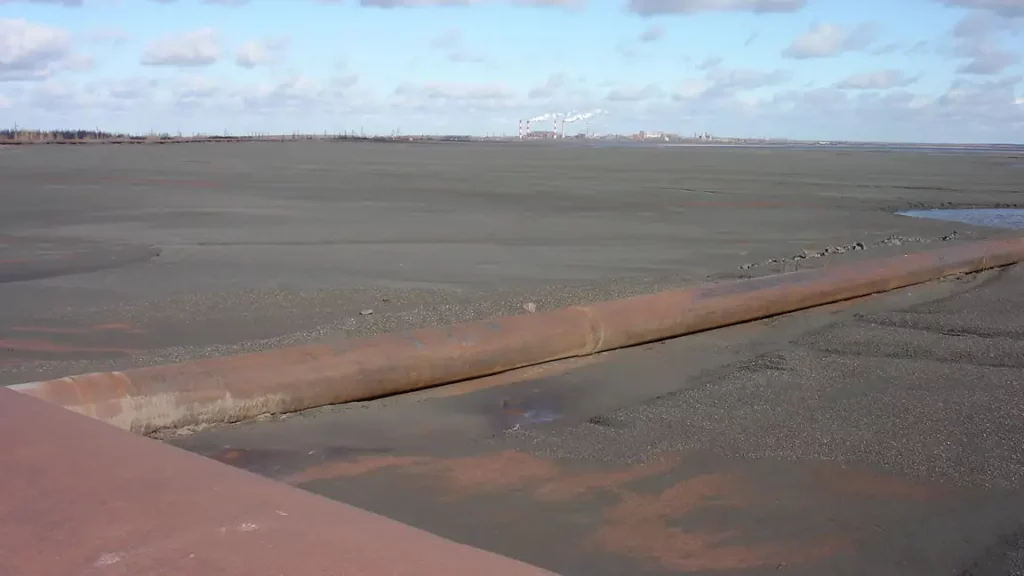
Automation in Tailings Pipeline Systems
Automation has become a key advancement in managing tailings transport systems. By automating various aspects of monitoring and control, mining operations can reduce the need for manual intervention while improving efficiency, safety, and operational consistency.
Automated Control Systems
Modern designs increasingly incorporate automated control systems that monitor crucial parameters such as flow rate, pressure, temperature, and chemical composition. These systems are engineered to detect irregularities and adjust operations automatically to prevent failures.
For example, automated valves and pumps regulate the flow of tailings slurry, maintaining consistent pressure and reducing the risk of ruptures or blockages. If pressure fluctuations or blockages occur, the system can make real-time adjustments, ensuring smooth operation and minimizing the likelihood of failure. Integrating these systems significantly boosts the reliability and efficiency of pipeline operations, particularly when combined with HDPE pipes.
Remote Monitoring and Management
In addition to on-site automation, remote monitoring has become a valuable tool in modern systems. Operators can access systems from remote locations, using advanced software interfaces that display real-time data from various sensors and automated control systems. Remote monitoring allows for quick responses to emerging issues without the need to be physically present at the site, enhancing safety by reducing exposure to hazardous environments. It also offers flexibility and convenience, as operators can adjust parameters or troubleshoot problems from anywhere. This proactive approach helps prevent issues from escalating, reducing operational disruptions and downtime. Moreover, integrating technologies like HDPE pipes ensures the system remains durable, allowing for smooth, uninterrupted operations and reinforcing the importance of effective tailings pipeline design.
Cost Benefits of Automation
While the initial investment in automation systems may be high, the long-term benefits outweigh the costs. Automation reduces human error, enhances operational efficiency, and helps prevent costly equipment failures. By ensuring that the pipeline system operates continuously at optimal performance levels, automation minimizes the risks of environmental contamination and significantly reduces the need for frequent repairs and unplanned maintenance. Additionally, the use of HDPE tailings pipes in automated systems contributes to lower maintenance costs due to their durability and resistance to wear. These cost-saving benefits contribute to both financial and environmental sustainability over the long run.
Smart Sensors for Real-Time Monitoring
Smart sensors have transformed tailings pipeline design by enabling real-time, continuous data collection, offering operators crucial insights into the pipeline’s condition. This technology helps detect early signs of issues such as blockages, leaks, or pressure irregularities, allowing for immediate action before problems escalate and causing costly downtime or environmental damage.
Types of Sensors Used in Tailings Pipelines
Several sensor types are integrated into modern tailings pipeline systems to monitor various aspects of the pipeline’s performance:
- Pressure Sensors: These sensors ensure the pipeline stays within safe pressure limits, alerting operators to potential blockages or malfunctions if pressure levels fluctuate.
- Temperature sensors track temperature fluctuations, helping detect issues such as excessive friction, wear, or blockages that could affect the system.
- Flow Rate sensors monitor the slurry’s flow and identify irregularities such as blockages or changes in consistency.
- Vibration sensors detect abnormal vibrations or movements within the pipeline, signaling issues such as misalignment or ruptures that may compromise its integrity.
- Chemical sensors assess the slurry’s chemical composition, identifying harmful substances, such as corrosive materials or heavy metals, that could damage the pipeline.
Benefits of Smart Sensors in Tailings Pipelines
Smart sensors play a crucial role in improving the health and safety of HDPE tailings pipes, offering significant advantages through real-time monitoring and data transmission. Here are some key benefits:
- Early Detection of Failures: By continuously monitoring parameters such as pressure, temperature, and vibration, sensors provide early warnings of potential issues. This early detection allows operators to address problems before they lead to major failures or environmental harm.
- Reduced Maintenance Costs: Smart sensors enable predictive maintenance by offering insights into the wear and tear of pipeline components. This helps operators plan maintenance schedules more effectively, avoiding unnecessary inspections and costly emergency repairs.
- Enhanced Safety: Smart sensors monitor the pipeline in real time to ensure that it operates within safe limits. By continuously providing operational feedback, they help protect workers from hazardous conditions and reduce the risk of accidents.
- Optimized Pipeline Performance: Sensors allow operators to make real-time adjustments to the system, optimizing pipeline performance. This helps prevent overloading, reduces energy consumption, and ensures the pipeline operates efficiently.
Real-Time Data and Its Impact on Decision-Making
The integration of real-time data into tailings pipeline systems has become crucial for effective decision-making. The data generated by smart sensors and automation systems feeds directly into monitoring platforms, offering operators a comprehensive view of the pipeline’s health and performance.
Enhancing Operational Efficiency
Real-time data allows operators to make timely, informed decisions. For instance, if pressure or flow rate deviations are detected, operators can quickly adjust the system to maintain optimal performance. With access to up-to-date information, they can address emerging issues proactively and minimize operational delays.
Data Analytics and Predictive Maintenance
Real-time data is also valuable when integrated with advanced analytics and machine learning algorithms. By analyzing historical data alongside live metrics, predictive maintenance models can help forecast when maintenance or replacements are needed. This predictive approach reduces the reliance on scheduled maintenance cycles, improving efficiency while lowering costs.
Improved Decision-Making
With access to real-time data, operators can make better decisions about various aspects of pipeline management, including flow regulation, pressure control, and maintenance scheduling. By tracking key performance indicators (KPIs) in real time, operators can ensure the pipeline functions optimally, improving efficiency and cost-effectiveness. Additionally, incorporating HDPE tailings pipes enhances the system’s durability and reliability, further supporting efficient operations.
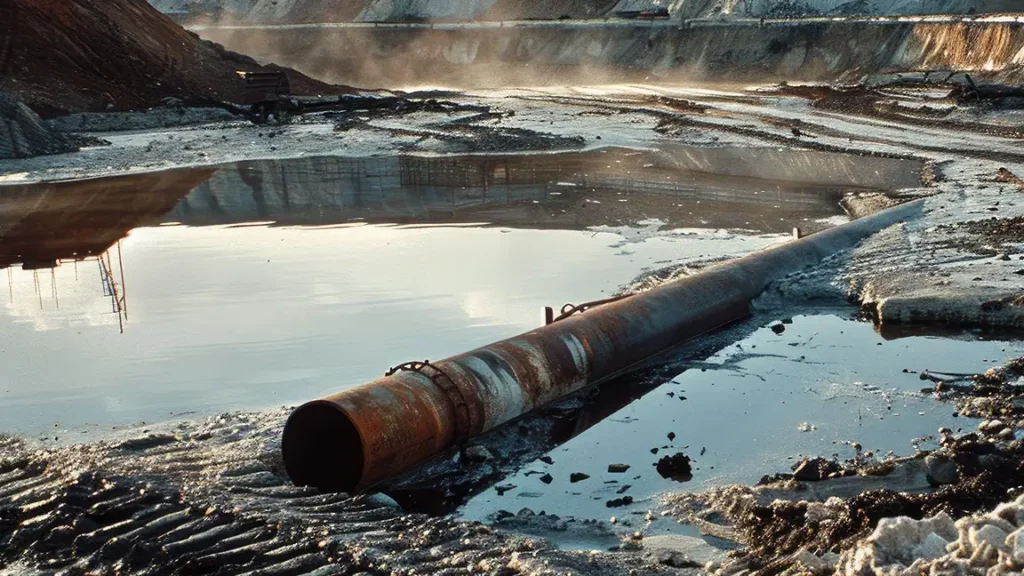
Advanced Materials for Tailings Pipelines
In addition to technological advancements, the materials used in pipeline design are evolving to meet the demands of modern mining operations. The choice of material significantly impacts the system’s durability, longevity, and ability to withstand harsh conditions such as abrasion, pressure fluctuations, and chemical exposure. HDPE tailings pipes have become a popular choice due to their excellent resistance to corrosion, wear, and chemicals, providing superior performance compared to traditional materials like steel and concrete. These advanced materials enhance the overall reliability and sustainability of waste management systems.
HDPE (High-Density Polyethylene) Tailings Pipes
HDPE tailings pipes have become a top choice for tailings pipeline design due to their exceptional resistance to corrosion, abrasion, and environmental stress. These pipes offer several advantages over traditional materials like steel or concrete, making them highly suitable for transporting tailings slurry.
HDPE pipes are lightweight, durable, and corrosion-resistant, reducing the need for frequent replacements and repairs. Their resistance to wear and tear helps extend the pipeline’s lifespan, minimizing maintenance costs. Additionally, HDPE pipes feature a smooth inner surface that reduces the risk of blockages, ensuring efficient tailings transportation.
The Future of Tailings Pipeline Systems: Trends and Innovations
The future of tailings pipeline systems is marked by continued advancements in automation, smart sensors, data analytics, and materials. The integration of AI, IoT, and robotics is expected to further enhance operational efficiency and safety in tailings pipeline management.
AI and IoT Integration
The integration of AI and IoT technologies is poised to transform tailings pipeline systems further. AI algorithms will analyze vast amounts of data from sensors and automated systems, predicting failures, optimizing operations, and enabling pipeline self-regulation. With AI-powered decision-making, human intervention will become even more streamlined, and operational risks will be minimized.
Robotics for Pipeline Inspection and Repair
Robots are expected to play a larger role in inspecting and maintaining tailings pipelines. These robots could be equipped with sensors to detect damage or blockages, and in some cases, they might even perform repairs autonomously. Such innovations will reduce the risks associated with manual inspection, particularly in hazardous environments.
Sustainability Focus
As industries continue to focus on sustainability, there will be greater pressure to improve the environmental impact of tailings pipeline systems. Future innovations aim to reduce energy consumption, enhance the efficiency of tailings disposal, and develop more eco-friendly materials.
Conclusion
Innovations like automation, smart sensors, real-time data analytics, and advanced materials such as HDPE tailings pipes drive the evolution of tailings pipeline systems. These technologies improve efficiency, safety, and sustainability while reducing risks and maintenance costs. The integration of AI, IoT, and robotics will further optimize management through predictive maintenance and autonomous systems, ensuring safer, more efficient operations. These advancements are crucial for long-term operational viability and environmental protection, shaping the future of tailings pipeline design and industry sustainability.

